Shoulder pain and finger tingling is a weird cocktail of symptoms. For most people it’s worrisome. Is it serious?
This article covers 7 common causes of shoulder pain and tingling the fingers. Spoiler alert: the most common causes aren’t serious medical conditions.
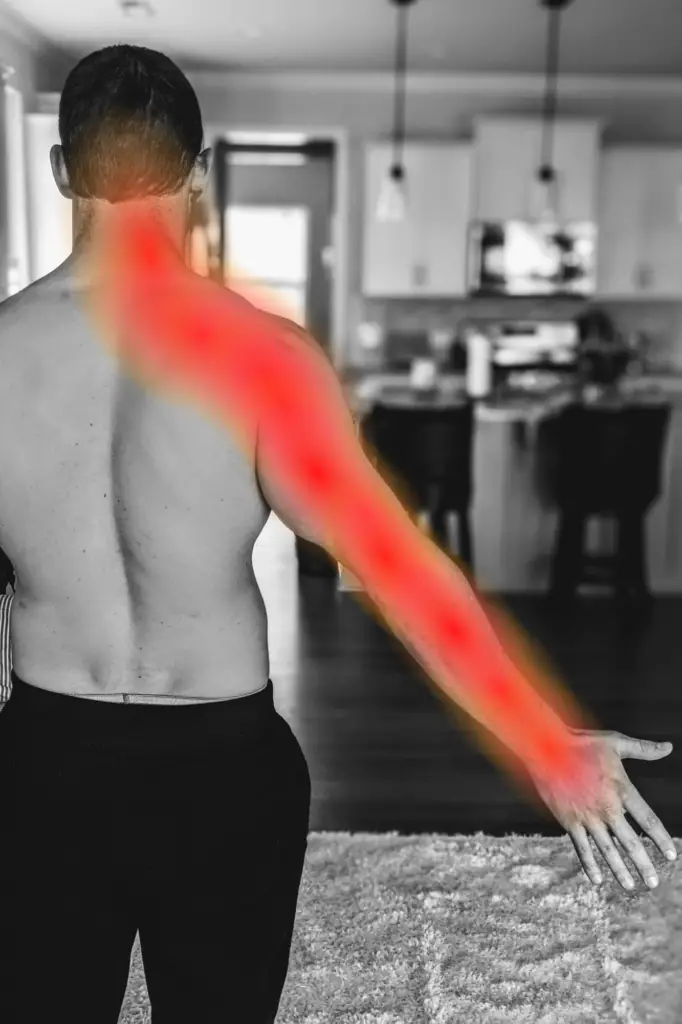
A few (rare) causes are serious, but most respond well to physical therapy and other conservative treatment.
1) Cervical Radiculopathy
Cervical radiculopathy, also known as a pinched nerve in the neck, can cause neck pain, shoulder pain, upper arm pain, forearm discomfort, and tingling in the fingers. Cervical radiculopathy often starts without warning or injury.
Structurally, it’s linked to anatomical issues at the cervical spine where the cervical nerve root exits the spinal column. There are 8 cervical nerve roots, C1 through C8. The most commonly pinched nerve is C7.

Anatomical causes of pain include bone spurs, spinal stenosis and herniated discs. Poor posture and turning the neck towards the painful arm exacerbate symptoms.
Fortunately, most cervical radiculopathies resolve on their own without needing surgery. Physical therapy is an excellent treatment option for cervical radiculopathy.
Specifically, many physical therapists rely on The McKenzie Method to find pain-relieving positions and movements to ease shoulder and arm symptoms.
This approach is outlined in the Treat Your Own Neck book, a popular guide that’s given thousands of people control over their neck and shoulder pain.
In severe cervical radiculopathy cases, symptoms are constant and unchanging. Muscle weakness and muscle atrophy are characteristics of high severity cases.
Cases like these may not respond to physical therapy. These patients are sent to a spine specialist, who may order magnetic resonance imaging (MRI), perform a steroid injection, or (occasionally) refer for surgery.
To learn specific exercises to relieve pinched nerve pain, check out The Ultimate Guide to Cervical Radiculopathy.
2) Carpal Tunnel Syndrome
Office workers and individuals who perform repetitive, heavy work with their hands often experience carpal tunnel syndrome (CTS). CTS is caused by median nerve compression at the front of the wrist.
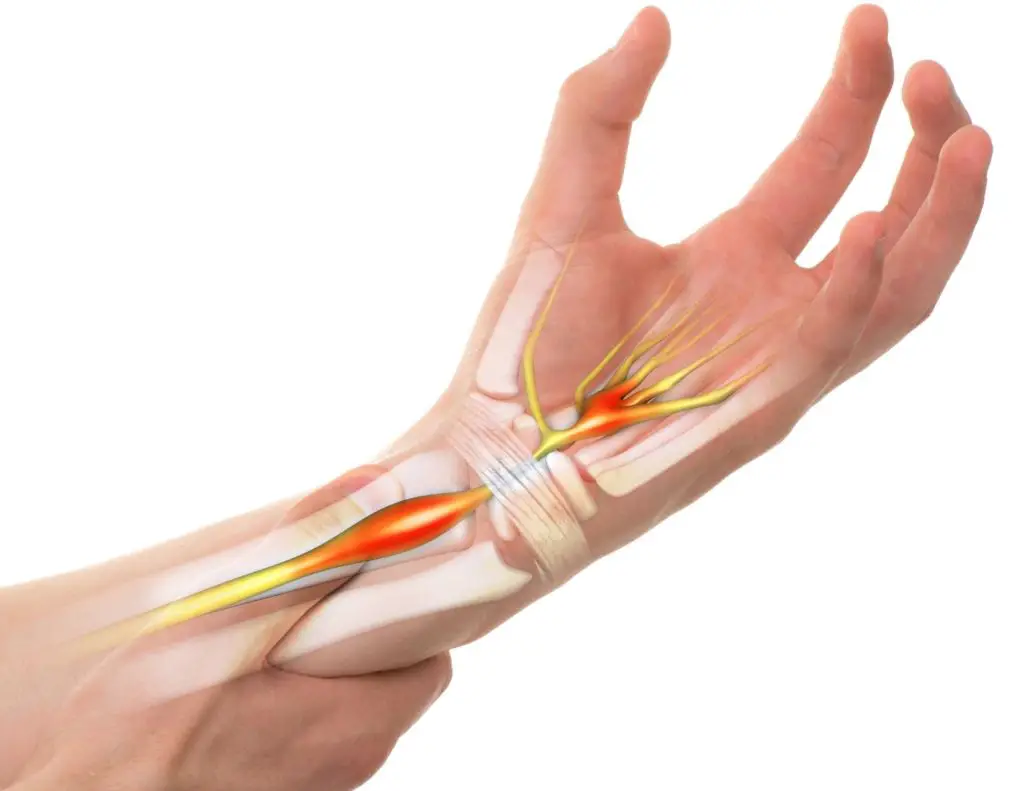
The median nerve supplies strength to forearm and hand muscles. It’s also responsible for palm sensation in the thumb, index finger, middle finger, and half of the ring finger.
Tingling in these areas may indicate median nerve involvement. Hand pain and numbness are also common symptoms of CTS.
Carpal tunnel syndrome sometimes improves with physical or occupational therapy. Severe symptoms, like muscle atrophy, constant numbness, and symptoms > 1 year, indicate a damaged nerve and typically warrant surgery (1).
More mild symptoms can resolve by avoiding aggravating activities and using a neutral wrist brace at night. Or if necessary, during the day, too.
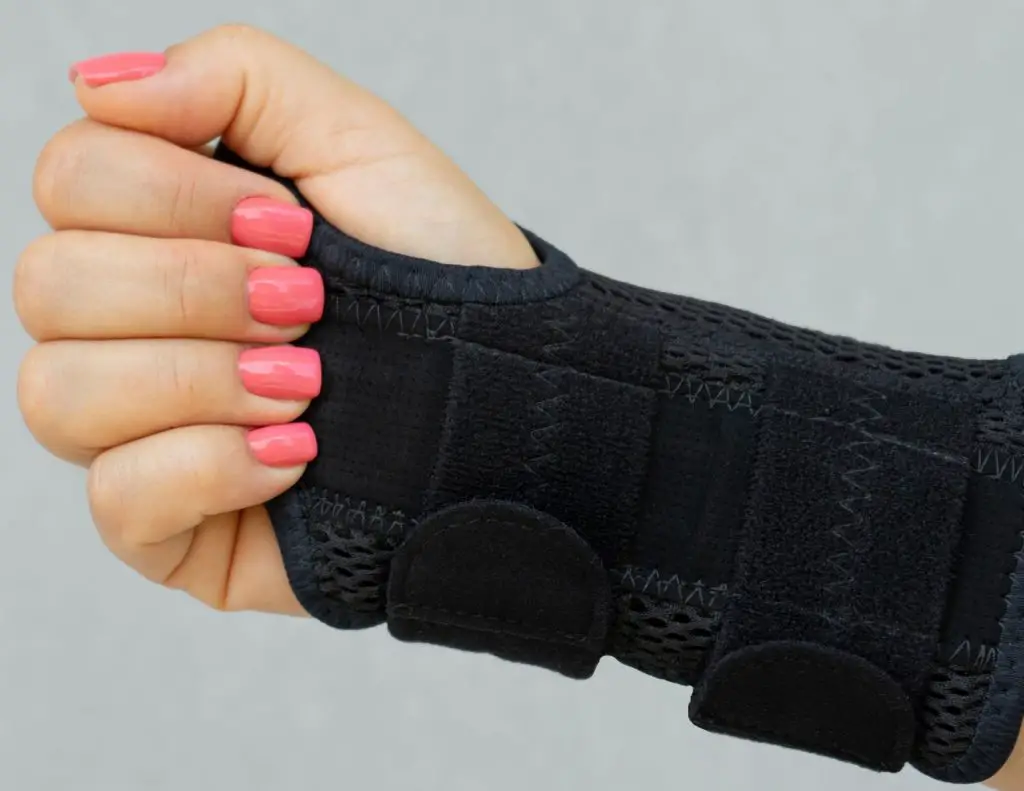
If you’re dealing with carpal tunnel syndrome, seek out a hand specialist who is a PT or an OT. Use the lookup tool here to find a hand specialist near you.
It’s important to remember that carpal tunnel syndrome does not necessarily involve shoulder pain. Carpal tunnel syndrome occurs with a pinched nerve at the wrist and leads to hand numbness and tingling. It does not directly affect the shoulder.
Shoulder pain may indicate another condition is causing the symptoms. Or the shoulder pain incidentally coincides with carpal tunnel syndrome.
3) Thoracic Outlet Syndrome
Thoracic outlet syndrome causes arm pain, heaviness, numbness and tingling. It’s caused by structures in the neck and shoulder area compressing nerves, arteries or veins that supply strength, sensation and blood flow to the arm.
Physical therapy is usually successful for relieving thoracic outlet syndrome. Treatments target nerve or blood vessel entrapment locations that cause thoracic outlet syndrome. There are 3 common sites for nerve or blood vessel compression.
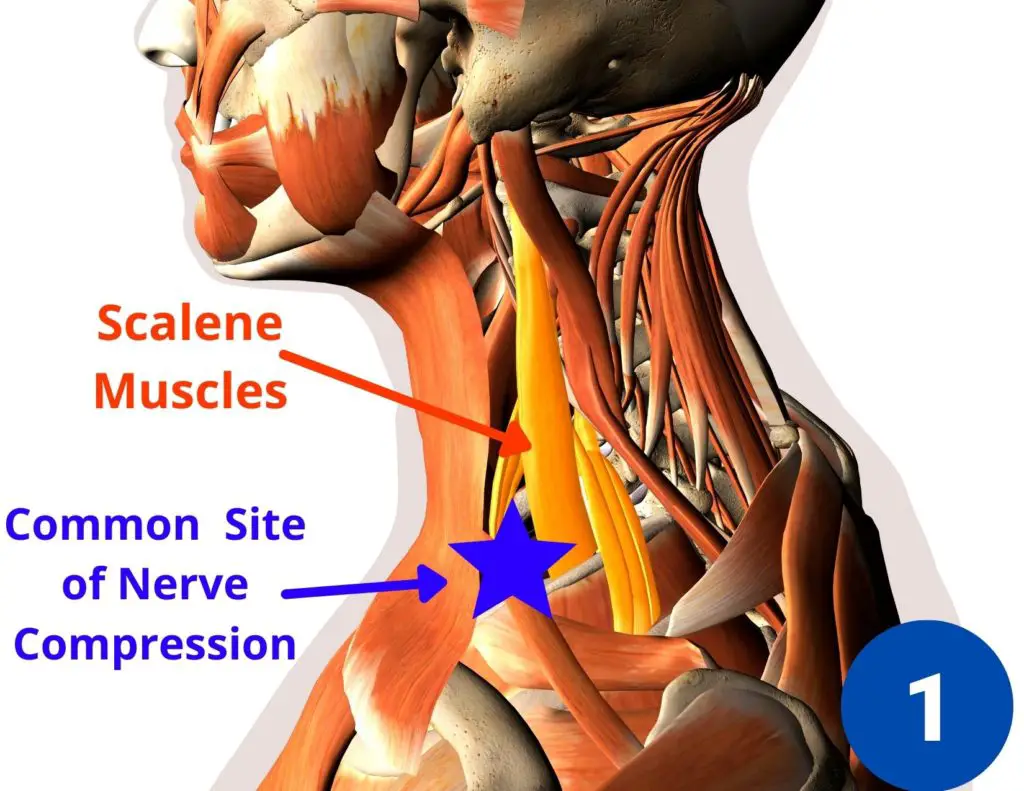
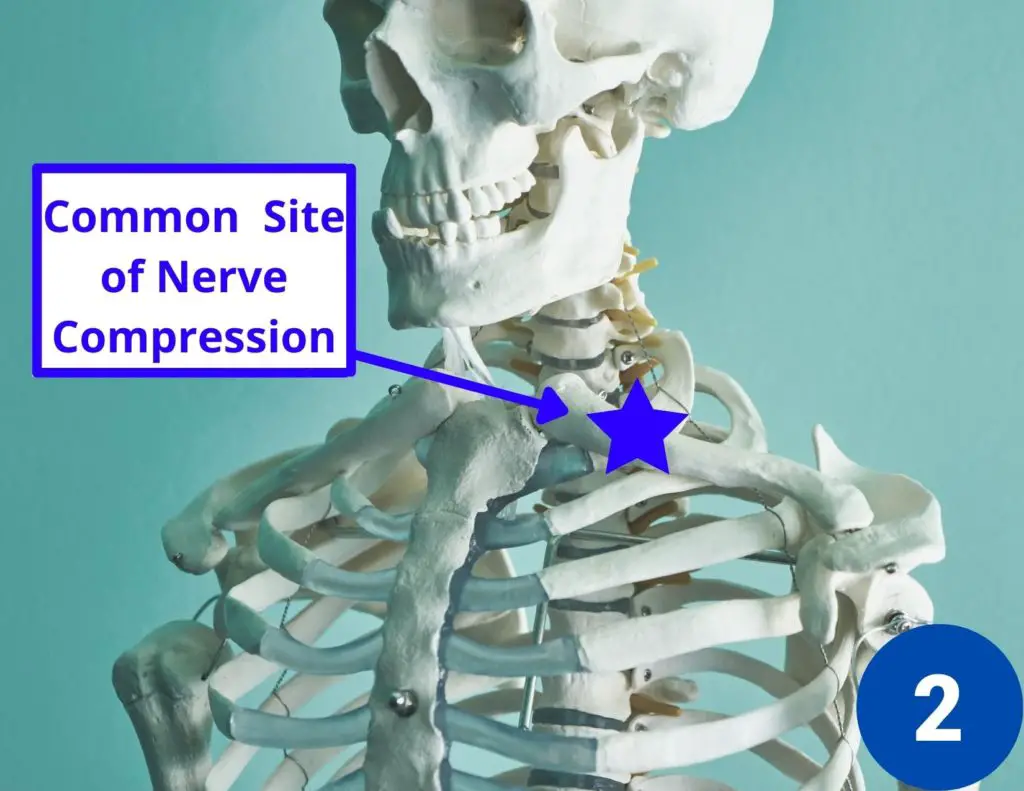
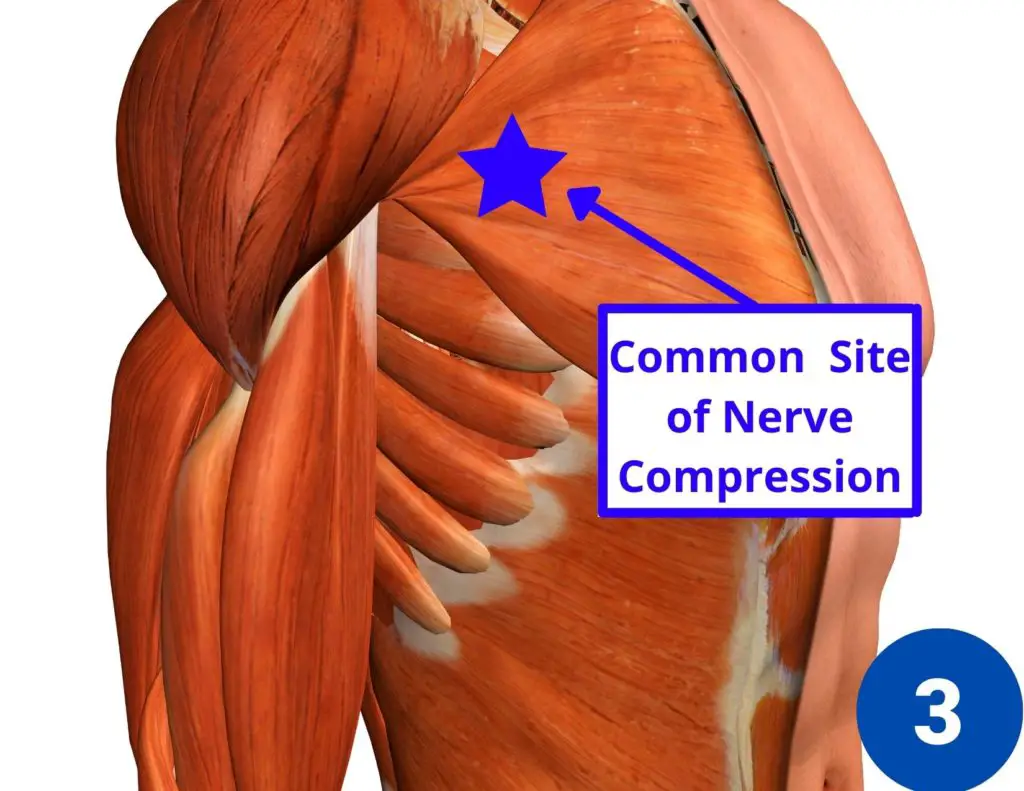
- Between the middle and anterior scalenes on the side of the neck
- Underneath the first rib, between the neck and the shoulder
- Under the pectoralis minor, located on the front of the chest near the shoulder.
Physical therapy for thoracic outlet syndrome involves mobilizing tight muscles and joints around the shoulder, neck and upper rib cage to relieve nerve and blood vessel compression.
4) Trigger Points
Trigger points are tight, tender spots in muscle tissue. In layman’s terms, they’re “knots” in the muscle.
Trigger points in the upper back and shoulder muscles can cause shoulder pain and tingling in the hand and fingers.
The infraspinatus muscle is a rotator cuff muscle that sits on top of the shoulder blade. Trigger points in this muscle cause shoulder pain and tingling in the fingers.

Research shows that infraspinatus trigger points mimic carpal tunnel syndrome symptoms (2). To learn more about dealing with infraspinatus pain, check out 8 Infraspinatus Exercises to Build a Strong Rotator Cuff.
The latissimus dorsi muscle can also cause shoulder pain, arm discomfort and hand tingling.

Review this article to learn how to fix lat dorsi pain.
Treating tight spots in the soft tissues around the shoulder can be the key to relieving shoulder pain and finger tingling.
Dry needling is the fastest way to relieve trigger point pain. To learn more about this unusual treatment, check out The Authoritative Guide to Dry Needling.
5) Peripheral Neuropathy
Peripheral neuropathy is an extremely common cause of finger (and toe) tingling. It is caused by nerve damage to the smallest nerves, beginning at the tips of the fingers and toes.
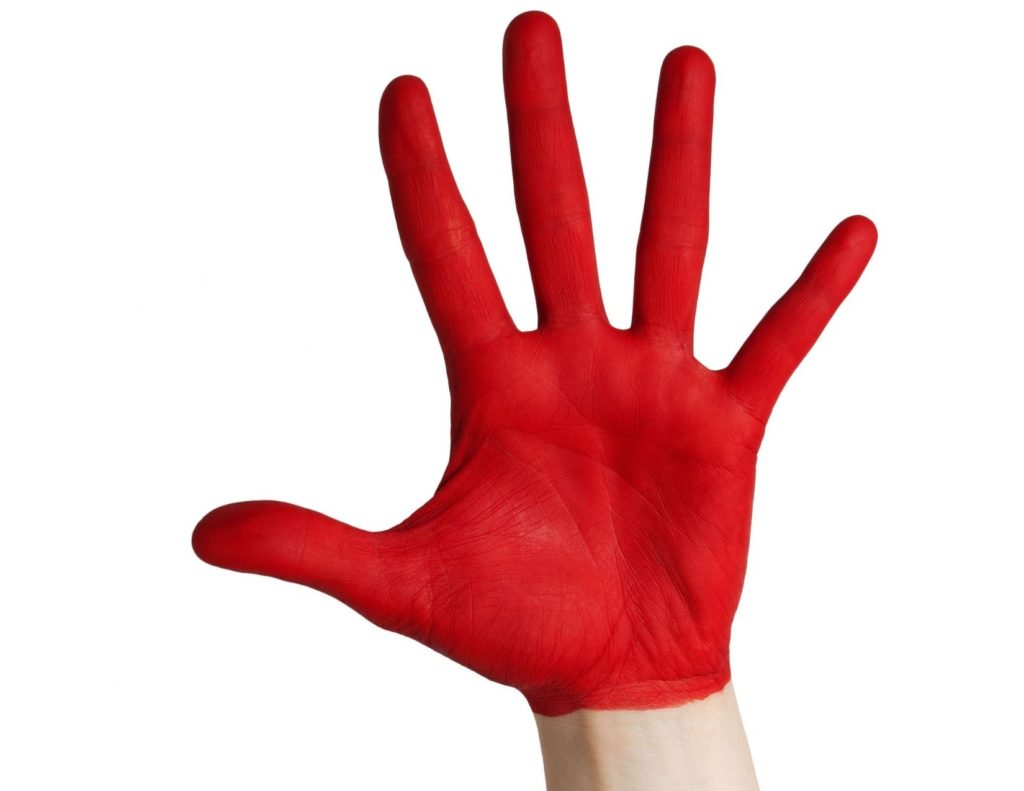
Peripheral neuropathy causes numbness, tingling, and pain in a “glove and stocking” pattern. Diabetes is the most common cause of peripheral neuropathy. Excessive alcohol use can also cause this condition.
In rare cases, it occurs without explanation – this is called idiopathic neuropathy.
Much like carpal tunnel syndrome, peripheral neuropathy causes tingling in the hand and fingers. However, it does not directly affect the shoulder.
Shoulder pain can happen to coincide with peripheral neuropathy to create shoulder and hand symptoms. Or if the symptoms are connected, it’s not peripheral neuropathy.
Peripheral neuropathy is not an emergency condition that demands immediate medical attention. If untreated, it slowly eats away at finger and toe sensation.
Physical therapy does not improve or address peripheral neuropathy. However, if neuropathy causes loss of hand function or balance problems, PT and OT can address these problems.
6) Spinal Cord Compression
This is one of the few causes of shoulder pain and finger tingling that requires immediate medical attention. Spinal cord compression can occur at the neck due to a fracture or a herniated disc (herniated disc shown here in pink, spinal cord shown in yellow).
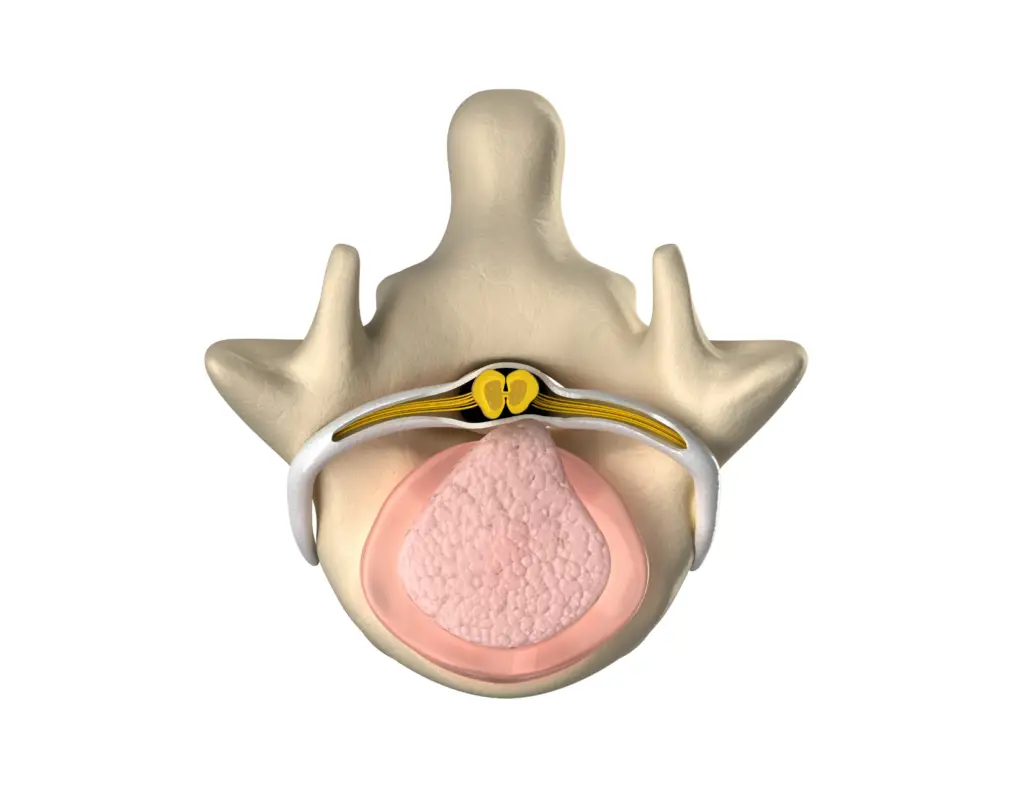
To be clear, many herniated discs do not cause any symptoms whatsoever. Disc bulges are common findings in MRIs of pain-free individuals (3). If they do cause symptoms, it’s usually cervical radiculopathy, which is treatable with physical therapy (Refer back to #1).
Symptomatic spinal cord compression causes bizarre symptoms. They include:
- Bilateral arm pain, numbness or tingling
- Bilateral leg pain
- Uncoordinated walking
- Change in bowel or bladder function
Spinal cord compression is a rare condition. New symptoms like those listed warrant immediate medical attention from a medical doctor, not a PT, chiropractor, or massage therapist.
7) Pancoast Tumor
A tumor in the upper part of the lung can cause shoulder pain and hand symptoms.

Symptoms may include unrelenting pain, unexplained weight loss and shortness of breath. Lung tumors most often affect people with a history of lung cancer and smokers.
Sadly, lung cancer is one of the many health risks associated with smoking.
Related: Is Sitting the New Smoking?
Much like spinal cord compression, this condition is a rare cause of shoulder pain and finger tingling.
Wrapping Up
In conclusion, shoulder pain and finger tingling should be assessed by a medical professional, like a medical doctor or physical therapist.
Most cases are treatable with physical therapy and respond positively to conservative treatments. In the unlikely case a serious medical condition is causing your symptoms, your PT will know what to do.
Physical therapists have extensive training in medical screening. PTs know when to refer patients for additional imaging and examination.
Readers: Have you dealt with shoulder pain and finger tingling? What caused it? How did you treat it? Let me know in the comments.
For more expert insights you won’t find anywhere else, join the free, fast-growing Facts & Physio Newsletter. Plus, get The Recovery Checklist when you sign up.

